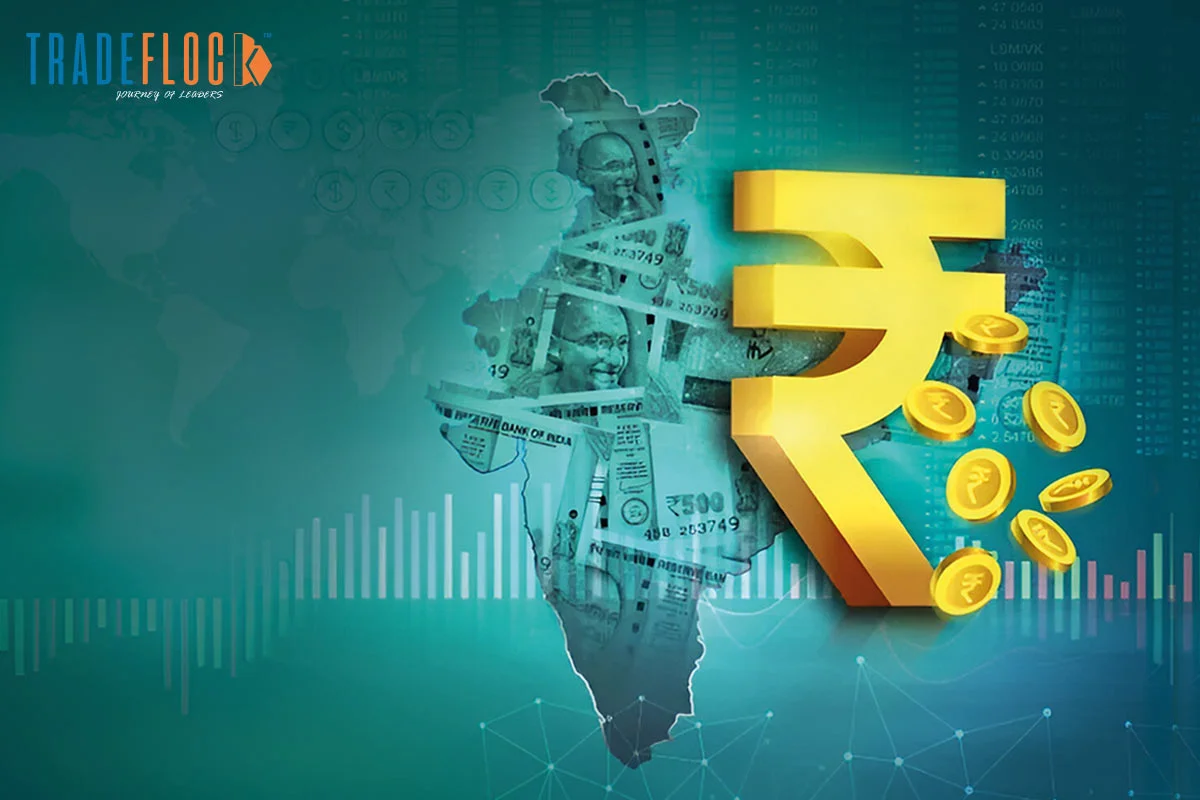India’s economy is not just growing; it’s on a remarkable upward trajectory, with Morgan Stanley projecting it to become the world’s third-largest by 2027. This growth is not a fluke but a result of three powerful megatrends: global offshoring, digitalisation, and the energy transition. The country’s GDP is expected to increase and double from $3.5 trillion to over $7.5 trillion by 2031. India’s share of global exports is not just set to increase but to potentially double, while the Bombay Stock Exchange is not just predicted to grow but to see an impressive 11% annual growth, reaching a market capitalisation of $10 trillion in the next decade.
The National Council of Applied Economic Research (NCAER) predicts that India’s economy might expand at a rate exceeding 7% in this financial year. Factors such as the projected acceleration in global growth, trade volumes, and an expected above-normal monsoon are positive indicators.
However, despite this robust economic growth, the value of the Indian rupee has not been able to maintain its strength. The reasons for this are not simple but multifaceted and complex. A significant factor is the strength of the US dollar and its consistent appreciation against most currencies. This trend is a reality that often leads to capital outflows from emerging markets like India as investors seek safer investments.
Another contributing factor is the high price of crude oil. India imports more than two-thirds of its oil requirements, making it vulnerable to global oil price fluctuations. When oil prices rise, the demand for dollars increases in India, leading to a depreciation of the rupee.
The trade deficit is also a concern. In November, India’s trade deficit grew to an all-time high of over $23 billion, driven by increased imports, particularly of oil and gold. This expanding trade gap puts pressure on the rupee, as more foreign currency is needed to pay for imports.
Furthermore, policy differences between the Federal Reserve and the Reserve Bank of India (RBI) have impacted the Rupee. The Fed’s low interest rates and improved US economic development predictions have strengthened the US currency. In contrast, the RBI has been purchasing US dollars to bolster reserves, which can contribute to the rupee’s depreciation.
The rupee’s depreciation is not just a matter of concern but a double-edged sword. While it theoretically boosts exports by making Indian goods cheaper on the global market, the current environment of uncertainty and weak global demand means that a weaker rupee may not just translate into higher exports. Additionally, it poses not just a risk but a significant risk of imported inflation, which can make it difficult for the RBI to maintain a low interest rate.
In conclusion, India’s economy is growing rapidly, but the rupee’s depreciation reflects the complex interplay of global economic forces, domestic vulnerabilities, and policy decisions. As India continues integrating with the global economy, managing the rupee’s value will remain a critical challenge for policymakers. The balance between accelerating economic growth and maintaining currency stability will be key to India’s continued economic success.






